C2.2 - Kingdoms Archaebacteria and Eubacteria
Prokaryotes and Eukaryotes
- Two basic types of cells
- Characterized by size and type of organelle
- Prokaryotes are bacteria
- prokaryotes: cells w/o nucleus and membrane-bound organelles
- eukaryotes: cells w/ nucleus and membrane-bound organelles
- unicellular: organism consisting of just one cell
- multicellular: organism consisting of many cells
- All other organisms classified as eukaryotes
- Prokaryotes thought to be first forms of life on Earth
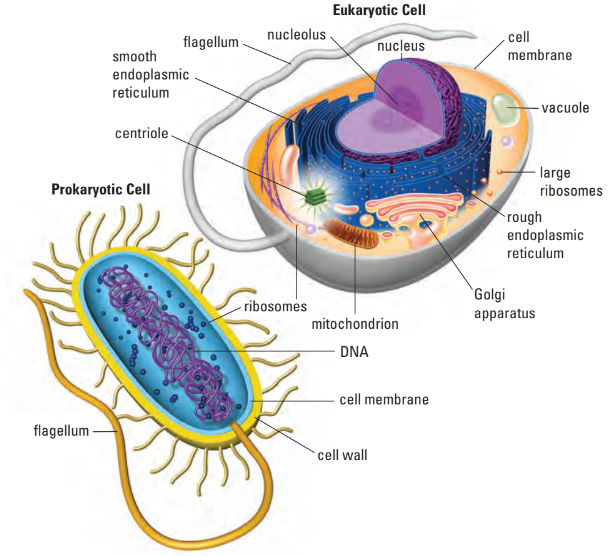
Major Differences between Two Types
| Prokaryotes | Eukaryotes |
|---|---|
| No nuclear membrane | Defined nuclear membrane |
| Small amounts of DNA | Large amounts of DNA |
| Single, circular chromosome w/o protein | Numerous chromosomes w/ associated proteins |
| No membrane-bound organelles | Diverse # and type of membrane-bound organelles |
| Asexual reprod. by binary fission | Reproduction by mitosis and meiosis |
Kingdom Archaebacteria (Old Bacteria)
- Once thought to be closest living relatives to cells
- Live in extremely harsh environments
- i.e. Dead Sea, Great Salt Lake, acidic hot springs, animal gut
Archaebacteria Locations
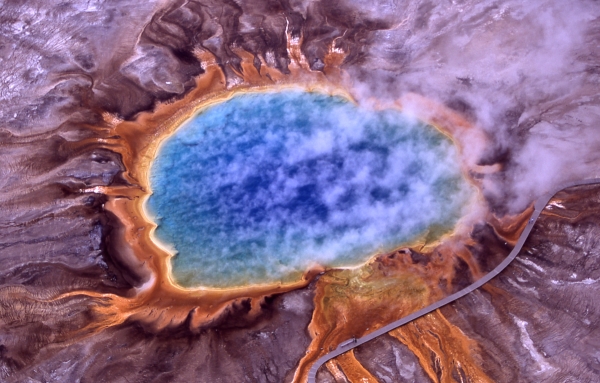
Grand Prismatic Spring, Yellowstone Park
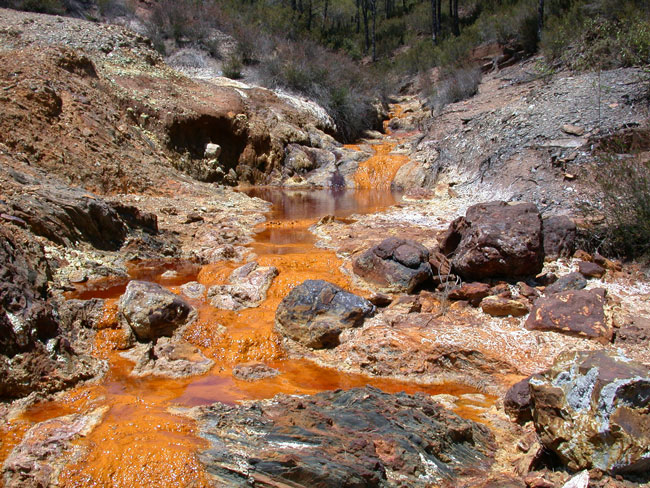
Rio Tinto River, Spain
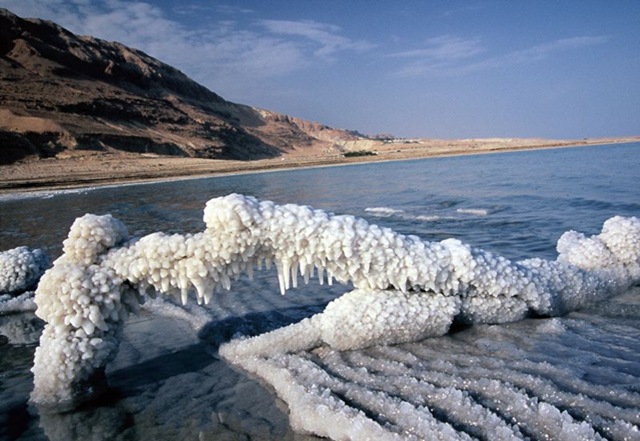
Dead Sea
The orange stuff is the archaebacteria thriving.
Kingdom Eubacteria (True Bacteria)
- Exist everywhere
- May either be autotrophs or heterotrophs
- Some cause disease
- i.e. tuberculosis (TB) caused by Mycobacterium tuberculosis
- airborne
- grows in lungs when inhaled
- triggers immune sys. to destroy large areas of tissue
- i.e. strep throat (Streptococcus pyogenes)
- i.e. diphtheria (Corynebacterium diphtheriae)
- i.e. many STDs and certain types of food poisoning
- i.e. tuberculosis (TB) caused by Mycobacterium tuberculosis
- Some are beneficial and essential
- mouth bacteria prevent other harmful organisms from growing there
- gut bacteria break down food
- in exchange, you house bacteria and provide them w/ resources
- key role in cycling nutrients
- i.e. decomposition
- i.e. nitrogen cycle
- i.e. oxygen supply
Cell Walls and Staining
- Cell walls contain peptidoglycan
- Gram-positive: Thick walls stain purple
- cell walls mostly contain peptidoglycan
- Gram-negative: Thin walls stain pink
- cell walls have less peptidoglycan
- have additional outer membrane
- Grams used for classification
Gram-positive bacteria
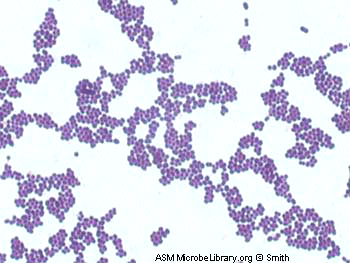
Gram-negative bacteria
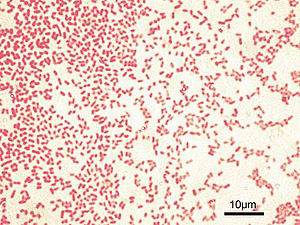
Classification of Eubacteria
- Classified by ability of cell wall to take up stain and cell shape
- Cell shape may be spherical or rod-shaped
- Rod-shaped bacteria may be extended, forming irregular or spiral shapes
- 3 Important Characteristics for Classification
- cell shape
- cell wall structure (stain)
- motility
- motility: method of movement
Motility of Bacteria
- half of all prokaryotes lack structures for movement
- flagella: long whip-like structures
- used to propel bacteria
- spiral-shaped bacteria use corkscrew motion to move
Spherical Bacteria
- cocci: spherical bacteria (Greek: berries)
- Plural cocci, singular coccus
- Variation in
- Monococcus: singular
- Diplococcus: double
- Streptococcus: chain
- Staphylococcus: clump
Examples
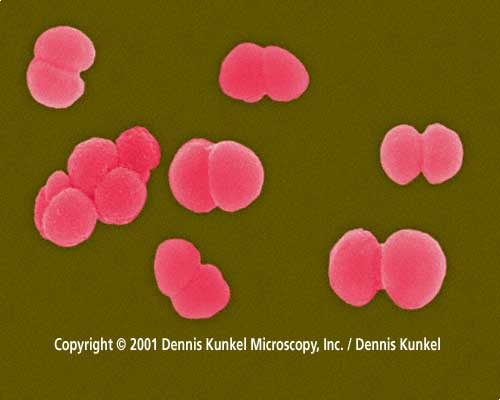
Diplococcus neisseria gonorrhoeae
harmful to humans, evolved resistance to antibiotics
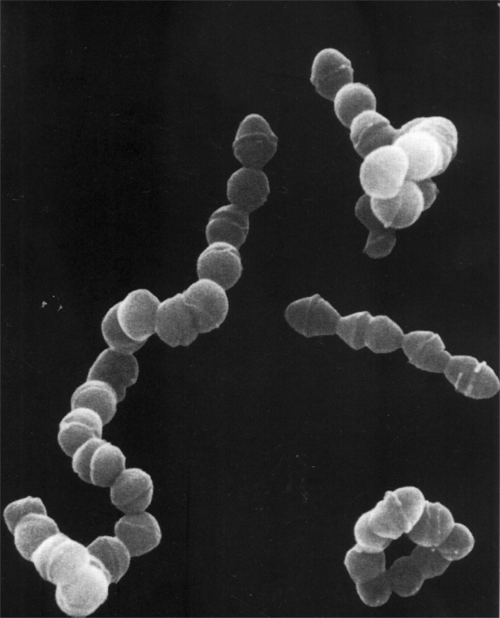
Streptococcus pneumonia
Causes pneumonia, inflammation of lungs affecting alveoli
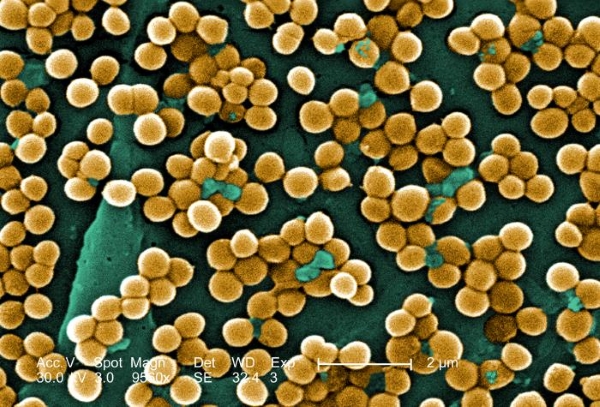
Methicillin-Resistant Staphylococcus areus (MRSA)
Rod-Shaped Bacteria
- bacilli: rod-shaped bacteria (Latin: stick)
- Plural bacilli, singular bacillus
- Exist singly or in clumps
- Variation in Cell Shape
- spirilla: spiral-shaped
- spirochaetes: tightly coiled
- largest spiral-shaped bacteria
- Greek for “long hair”
- incl. bacteria that cause Lyme disease
- vibrio: comma-shaped
- filamentous: long filaments
- spirochetes are sometimes considered a third type instead of under bacilli
Examples
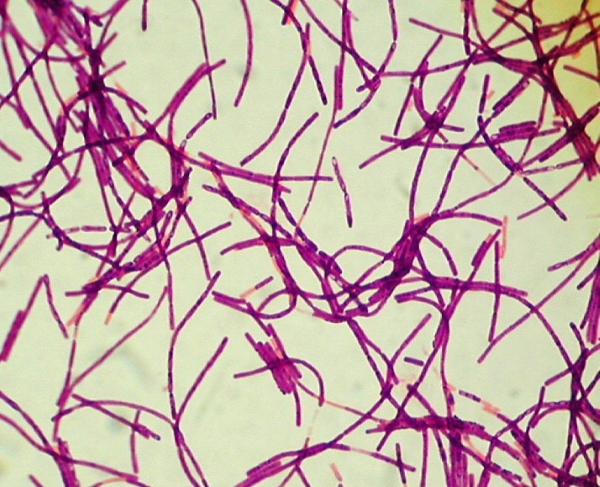
Bacillus anthracis (Anthraxx)
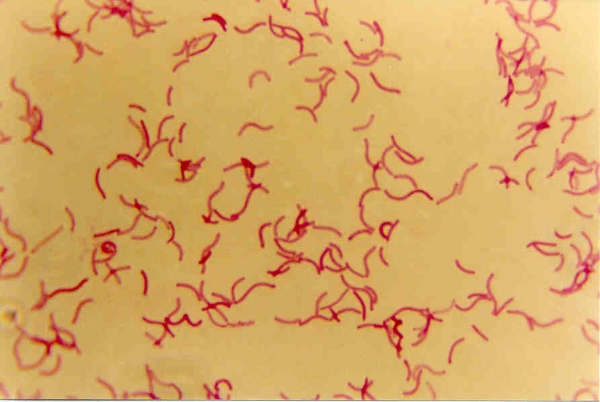
Spirilla bacteria
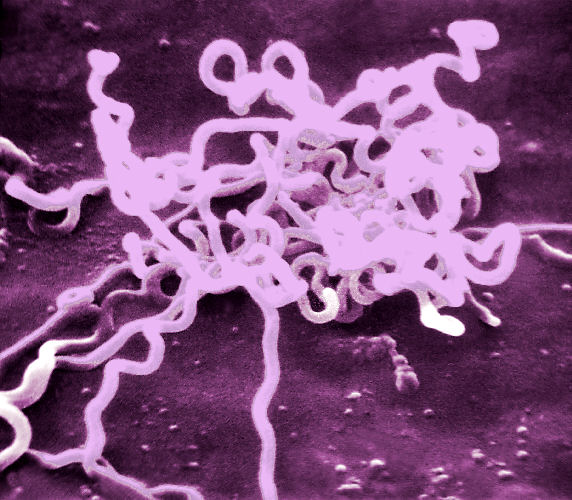
Treponema pallidum (syphilis)
eats bones
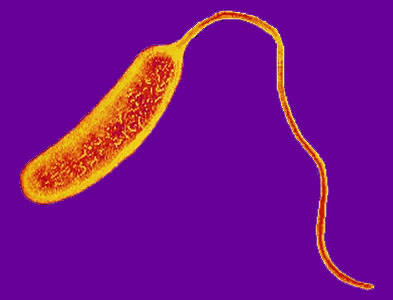
Vibrio cholerae (cholera)
Causes disease from drinking dirty water
Obtaining Nutrition
- autotroph: organism that produces own food (using light, water, CO2 and other chems.)
- heterotroph: organism that consumes other organisms / organic molecules for food
- photoautotroph: autotroph that uses sunlight for photosynthesis
- makes CO2 into carbon compounds like sugar
- chemoautotroph: autotroph that gains energy from chemical reactions
- inorganic molecule oxidization
- involves ammonia, hydrogen sulfide, similar chems.
- photoheterotroph: heterotroph that also uses light energy
- aerobic: gains energy/food by processing oxygen
- anaerobic: doesn’t need oxygen to gain energy/food
- anoxic: depleted of / lacking oxygen
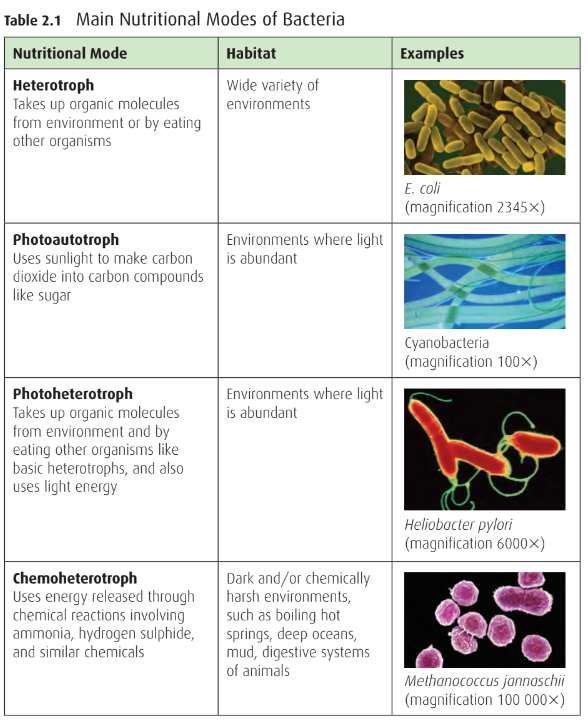
Viruses
- virus: microscopic germs that infect a host in order to replicate
- not living because non-cellular
- use DNA and ribonucleic acid (RNA)
- also adapt to changing conditions and mutate
- cannot reproduce w/o a host
Structure and Function
- virus structure is suited for entering host cells and reproducing
- viruses contain DNA or RNA surrounded by a protein coat
- some viruses have outer membranes that help them merge with host cells
- viruses vary in shape and size
- classified based on the type of cell they infect
- viral protein coat acts like a key to enter specific host cells
- most viruses infect only one specific type of cell
- i.e. HIV infects only T cells of the immune system
- bacteriophages: viruses that infect specific bacteria
- used in biotechnology
- some viruses like avian flu can infect many cell types across species
Reproduction
- unload genetic material
- take control of cell process
- replicate
Lytic Cycle
- Virus attaches to host cell and injects its DNA
- causes host cell’s enzymes and synthesis machinery to make copies of viral DNA and proteins
- Replicate virus
- viral proteins and nucleic acids assemble themselves inside host cell
- many copies made
- Release
- once there are 20-500 virus copies, cell can no longer hold them
- celll bursts open
Lysogenic Cycle
- viral genes incorporated within host cell’s DNA
- viral DNA replicated each time host cell reproduces
- environ. change in temp. or pH triggers viral DNA to separate from host DNA and start lytic cycle
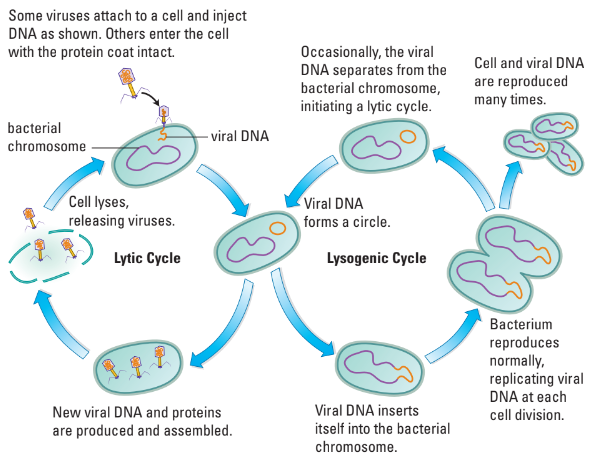
Climate Change
- climate change affects diversity and interactions of prokaryotes
- rising sea levels push salt water into peat wetlands
- peat wetlands contain methane-producing bacteria vital to ecosystem health
- sulphate-metabolizing bacteria and archaea increase with salt water exposure
- these microbes release toxins that kill surface vegetation and destroy peat
- salt water exposure shifts microbial populations, reducing methane bacteria
- loss of peat habitat forces species to die or relocate
- peat disintegration releases carbon dioxide and methane into the atmosphere
- contributes to global warming
- reduces peat soil available for farming and gardening